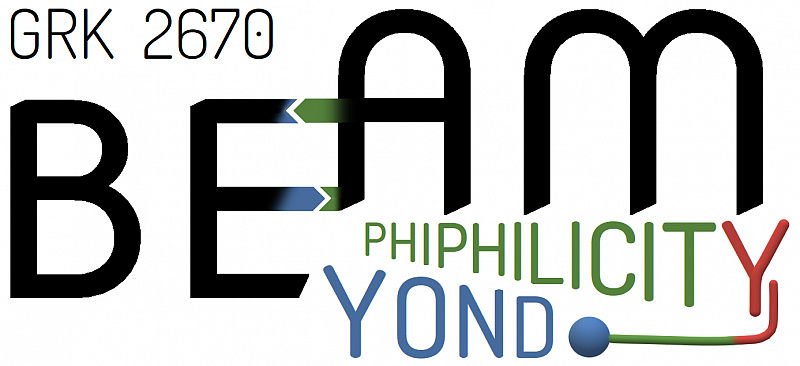Projects: B
Self-organization of (bio-)polymeric polyphilic molecules through multiple interactions
B1: Thermodynamics of fluorophilicity, lipophilicity, hydrophilicity, and their combination in polymers
Supervisor: Prof. J. Kressler
Contact: joerg.kressler@chemie.uni-halle.de
An important aspect of polymers with fluorinated groups is their potential triphilic character, i.e. they have in addition to hydrophilic and lipophilic building blocks also fluorophilic units. Syntheses and characterization of their self-assembly in bulk and in selective solvents, as well as their potential applications are thus a core contribution to the planned RTG.

Here, we focus on syntheses of semi-telechelic polymers with fluorophilic units and the description of their behavior in selective solvents based on binary partition coefficients. These data allow for conclusions on the self-assembly of triphilic polymers.
B2: Cluster-formation and interfacial function in polymeric ionic liquids
Supervisor: Prof. W. Binder
Contact: wolfgang.binder@chemie.uni-halle.de
Compartmentation of polyphilic molecules and macromolecules has been important in forming complex liquid crystals, nanocompartements or multicompartment block copolymer micelles. The basic principle of microsegregation is currently well understood for liquid-crystalline systems via solubility parameters and via Flory-Huggins theory in blockcopolymers.

Apart from polyelectrolyte-systems (e. g. mixtures of polymers bearing opposite charges), purely polyionic systems are significantly more difficult to describe, primarily due to the formation of ionic clusters, as described via the Eisenberg-Moore-Hird-theory.
The main aim of this project is to obtain a deeper understanding of the physical and chemical segregation phenomena in polyphilic, polymeric ionic liquids (POILs) in relation to their molecular architecture and their behavior at interfaces.
The project will address ordering of POILs at interfaces by experimentally and theoretically studying these effects in highly defined poly-ILs, primarily addressing model systems. Main issues concern colloidal ordering within mesoscaled ionic liquid polymers, the properties of the ionic clusters under mesoscale-confinement, as well as dispersion effects at ionic liquid interfaces. We plan to address highly defined polymeric and oligomeric ILs by design, studying their highly dynamic three-dimensional organization in bulk and at interfaces.
B3: Tuning protein and nanocolloid diffusion and assembly through polyphilic interactions: the role of patchiness and charges
Supervisor: Prof. K. Saalwächter
Contact: kay.saalwaechter@physik.uni-halle.de
The amphiphilic (or more generally: polyphilic) character of a molecule as manifested in specific structural features leads to specific anisotropic intermolecular interactions and thus to a rich variety of self-organization phenomena, as addressed in the other projects of the RTG.

Here, we focus on the rotational and translational dynamics, which are governed by the same interactions and provide the pathway to such self-organization. Our previous work on native-state proteins in crowded (concentrated) solutions evidenced a surprisingly large effect of different protein-protein interactions on rotational and translational diffusion.
B4: Diffusional and Co-Diffusional Analysis of Polyphilic Protein-Protein and Protein-Membrane Interactions
Supervisor: Prof. K. Bacia
Contact: kirsten.bacia@chemie.uni-halle.de
In biology, protein-protein interactions and protein-lipid interaction lead to highly complex, dynamically self-assembling and restructuring systems. The concept of amphiphilicity has been instrumental in gaining an understanding of biomembranes, including the fundamental self-assembly of the lipid bilayer and the integration of the hydrophobic transmembrane domains of integral membrane proteins.

However, amphiphilicity alone does not suffice to comprehensively describe membrane-related phenomena, e.g. membrane curvature generation by proteins that interact with bilayers through hydrophobic and amphipathic insertions and scaffolding. Hence, further developing easily applicable concepts that simplify individual intermolecular interactions into philicities and phobicities is essential.
